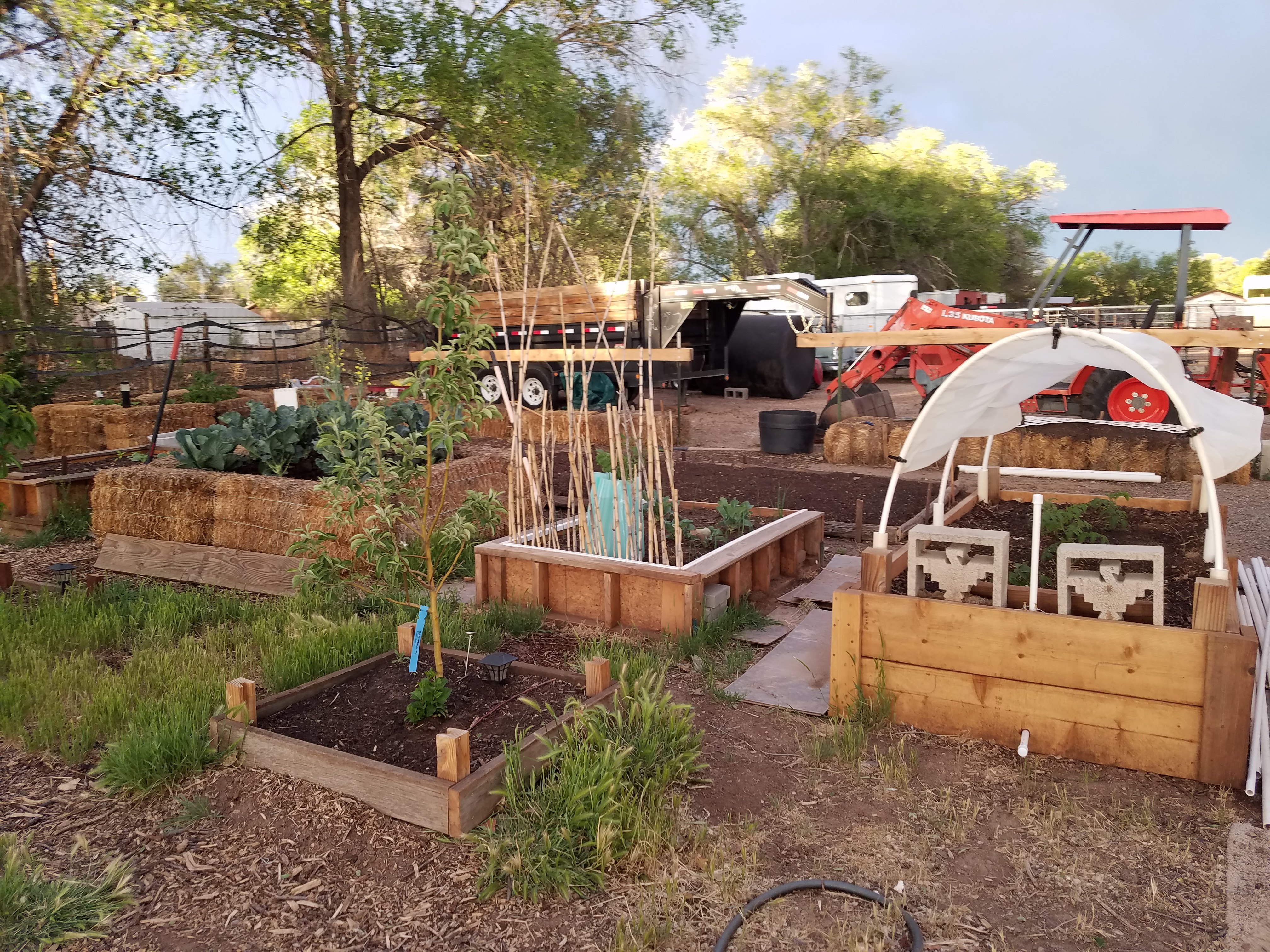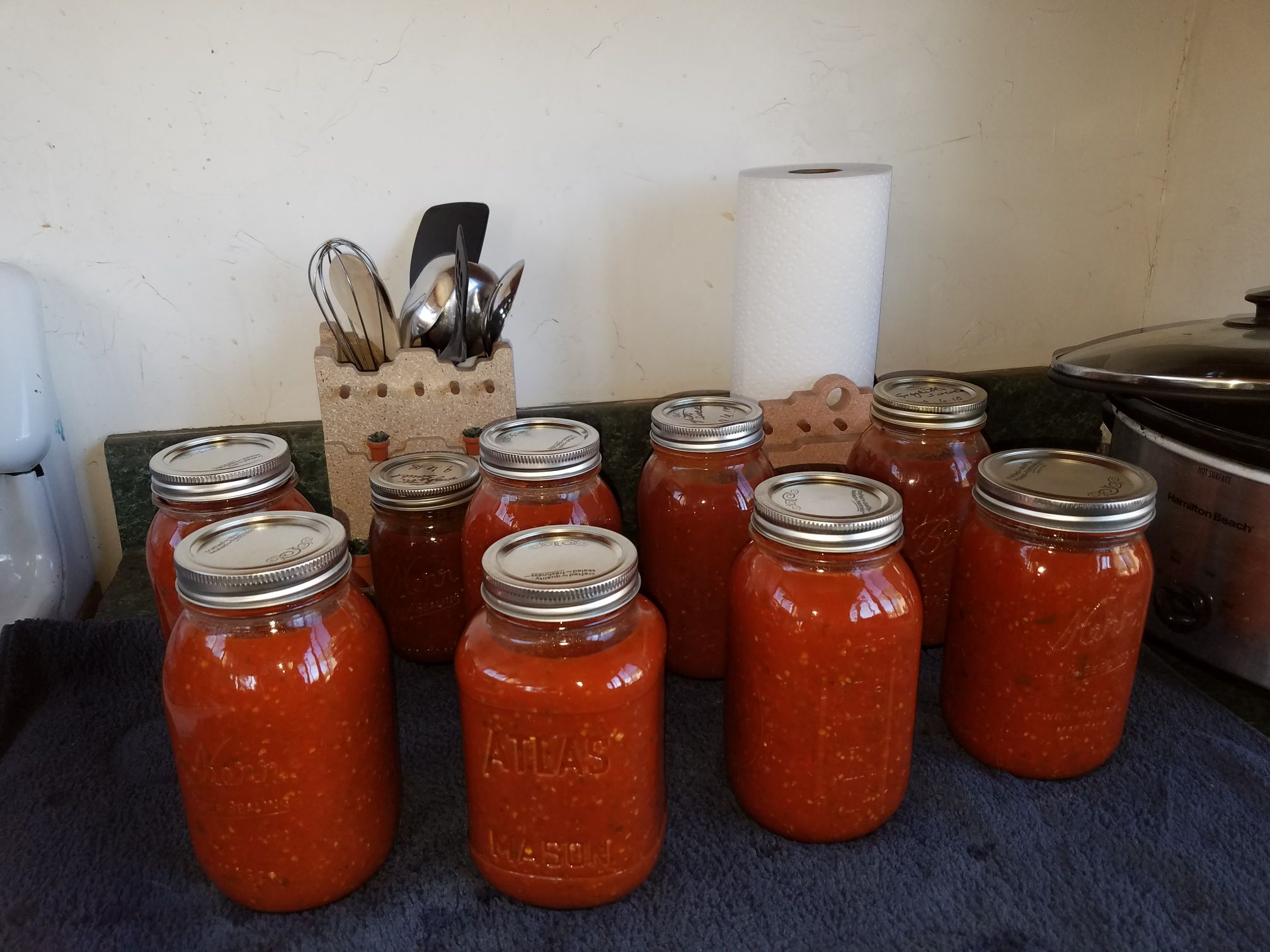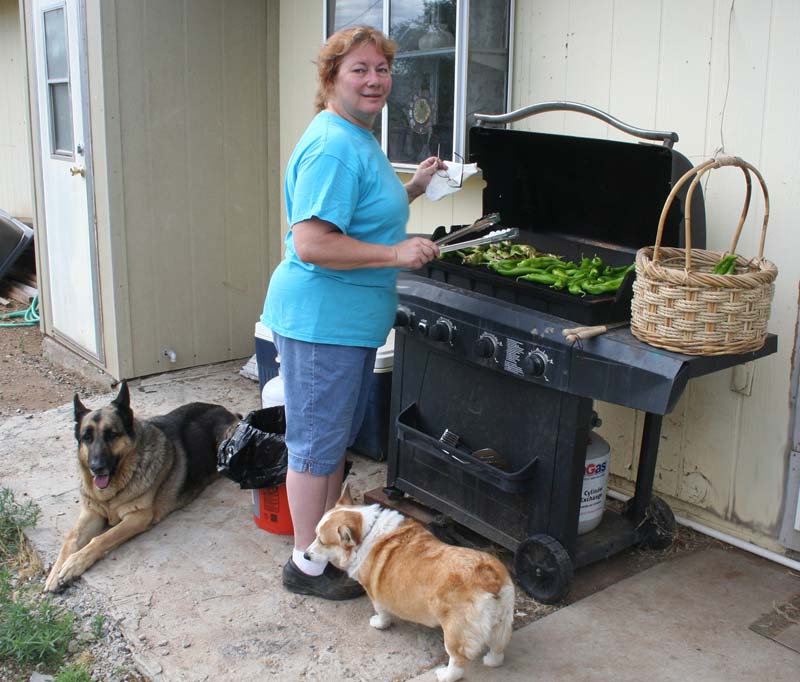By Rosie Kern

I live just south of the city of Albuquerque, New Mexico on half an acre. This is a convenient halfway point for anyone who longs for a touch of country self-sufficiency but who may have a need to be near a larger population base for some reason.
The property is large enough for me to have a 50×60 vegetable garden, fruit trees, a beehive and chickens. I enjoy organic gardening, canning and otherwise processing the foods I eat to enjoy all year. The problem is that my harvest extends for a long time, but I don’t always have the time to pull down my canner!
Commercial farmers plant large areas and harvest everything at once – at the time they feel their plants have most of the produce at a perfect state of ripeness. Then everything gets trotted off for processing.

In my garden I have 5 varieties of peppers, 2 types of tomatoes, green beans, lima beans, corn, cabbage, potatoes, onions, potatoes, peas, asparagus, broccoli, apples, pears, pecans, cherries, and a lot of herbs. They do not all ripen at once. (thank heaven)
Sometimes I can anticipate when a lot of one thing will be ready, but more often than not things will ripen in stages. It is ridiculous to fire up the pressure canner for just a couple of quart jars! Not to mention that sometimes other personal responsibilities or vacation will supersede the joy of cooking and processing.
There are a few ways you can handle this with your kitchen garden to make it easier and more efficient.
Tomatoes are one of my favorite items to preserve – they are so versatile! Salsas, soups, sauces – YUM! The first luscious red fruits are sparse, but over time they pick up the pace. I plant just a few of the large beefsteak type tomatoes, a couple cherry tomatoes and 7 or 8 thicker paste tomatoes. Though the beefsteak and cherries are primarily for eating fresh, an overabundance of either can be added to the paste tomatoes when canning.
During those times when there are more ripe tomatoes than I have time to process, I will harvest and wash them, frequently cutting them into chunks and removing stems or spots. Then they get put into a gallon sized Ziploc bag and plopped into the freezer.
Freezing at the peak of ripeness is a perfect way to build up enough of them for a good day of cooking and canning later on. I leave the nutritious skins on because tossing them in a food processor pulverizes them beautifully.
 Another vegetable than you can partially process then freeze for future use are green chile peppers. Chiles are normally roasted and skinned before being cooked or canned. If you have a couple hours you can pick the ones you feel are large enough and roast them on your BBQ grill. You want them to puff up and the skins to brown and crack a bit – but don’t blacken them entirely!
Another vegetable than you can partially process then freeze for future use are green chile peppers. Chiles are normally roasted and skinned before being cooked or canned. If you have a couple hours you can pick the ones you feel are large enough and roast them on your BBQ grill. You want them to puff up and the skins to brown and crack a bit – but don’t blacken them entirely!
You can grill at least a bucket full at a time. First soak the peppers for 1- 3 hours in water, then fire up the grill to high and toss them on. An option to turning them individually by hand is a grilling basket or rotisserie cage which allows you to turn them easier.
Take the roasted peppers and place them in a zip bag or other airtight container while they are still very hot and let them set in a warm place for a few hours or overnight. This is called “sweating” them, which helps separate the meat from the skins. Then plop them in the freezer.
Some people just leave them in the freezer until they wish to use them in cooking. I don’t have enough freezer space to keep everything I harvest there so I process as much as possible by canning. When you are ready to use them or can them you take them from the freezer to a clean kitchen sink. Fill the sink with water and when they thaw out you can begin stripping the skins from the peppers by hand.
Wearing rubber or latex gloves is a VERY good idea as the capsaicin in the peppers will make your hands burn after a while. I usually heavily cream my hands an hour before donning the gloves as an extra precaution.
Once the skins, stems and most of the seeds are removed you can either process them whole, chopped, or make great tasting sauces with them. I get heartburn from bell peppers and poblanos, but I have no problems with pimentos, cayenne or green chile. As a result my homemade spaghetti sauce has a mild bite to it, which southwesterners appreciate!
Like most home farmers I love to pick my ears of corn just as they are fully ripe. If some of them escape my notice they can start to dry out a bit…or sometimes a lot. That’s ok. When I find those I just let them continue to dry out until I am ready to use them. Then I shuck them and cut the kernels off and add them to homemade soups and stews.
If pollination has been spotty the corn cob may be partially bald. Rather than serve them on the cob I will cut the kernels off and freeze them. You can also freeze full cobs, but it takes a lot of freezer space.
Potatoes can be left in the ground long after the tops die back. A mild freeze late in fall won’t usually hurt the ones that have a few inches of dirt over the top. Onions, carrots and garlic can just stay where they are all winter until I want to use them.
Broccoli is planted very early in the year – before the last frost date. It can handle a bit of cold. However it will create one big head per plant which commercial farmers harvest and sent to the store before plowing the rest of the plant under. Personally I think that is very premature! After I’ve harvested (and eaten) the main head I leave the plant in the ground where it will start to send out side shoots. You won’t ever get another great big head, but the little shoots are great in salads and stir fry.
Cabbages are another plant that develop one huge head. However, the leaves around the main head are also edible and can be snipped off at any time for cole slaw, sauerkraut, or cabbage rolls.
In many climates carrots, parsnips, turnips, garlic and onion seed can be planted in the fall just before the first frost. Cover the beds in straw when nighttime freezes begin. You’d be amazed how many of them will be pushing up early next spring and ripe by June.
Of course, if you just have too much food on your hands at any given time, neighbors and local foodbanks will thank you for it. Giving away your extras makes a lot of friends!

Leave a Reply